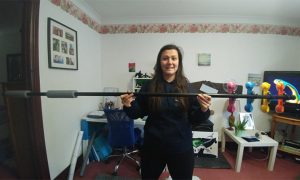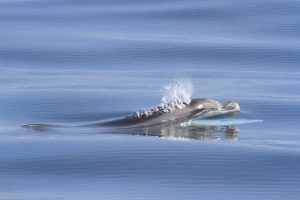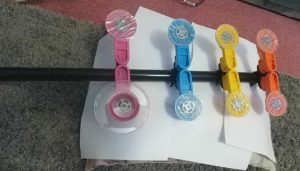It’s all in the snot!
 The winter is a time to plan what we are going to do in the year to come, and this year we have some very exciting developments in store! One of our Regional Coordinators and survey veteran, Chloe, who is studying at Swansea University, has teamed up with Sea Watch to try out a new technique which will hopefully give us a lot of very interesting information on our Welsh bottlenose dolphins. This year, Sea Changers, a marine conservation charity has given Sea Watch and Swansea University a grant which will pay for us to go on boat trips to collect dolphin snot! Yes, you read that correctly! Eww, but why would we want that?
The winter is a time to plan what we are going to do in the year to come, and this year we have some very exciting developments in store! One of our Regional Coordinators and survey veteran, Chloe, who is studying at Swansea University, has teamed up with Sea Watch to try out a new technique which will hopefully give us a lot of very interesting information on our Welsh bottlenose dolphins. This year, Sea Changers, a marine conservation charity has given Sea Watch and Swansea University a grant which will pay for us to go on boat trips to collect dolphin snot! Yes, you read that correctly! Eww, but why would we want that?
 Although the idea might seem gross, we may actually be able tell a lot from dolphin snot! When dolphins come to the surface to breathe, they first breathe out, often resulting in a little spout of water vapour. We call this a ‘blow’. In some large whale species such as the blue whale, the blow can be up to 9m high! Dolphins need to breathe out quite quickly and powerfully as they are only at the surface for a short period of time. Think of it a bit like blowing your nose. When they breathe out like that, their blow, or less elegantly put ‘snot’, often contains bits of cells, and that’s what we’re after!
Although the idea might seem gross, we may actually be able tell a lot from dolphin snot! When dolphins come to the surface to breathe, they first breathe out, often resulting in a little spout of water vapour. We call this a ‘blow’. In some large whale species such as the blue whale, the blow can be up to 9m high! Dolphins need to breathe out quite quickly and powerfully as they are only at the surface for a short period of time. Think of it a bit like blowing your nose. When they breathe out like that, their blow, or less elegantly put ‘snot’, often contains bits of cells, and that’s what we’re after!
Every mammal is made up of cells and within those cells there is material called DNA. DNA tells your cells what to do and determines what you look like – it’s the reason you may look a bit like your parents but also different from them. When we examine cells, we can tell different individual dolphins apart from each other (without even having to look at their fins), but DNA can tell us a lot more than photographs. For example, we know that Lumpy is Smoothy’s calf because we knew what Smoothy looks like and we were able to photograph Lumpy year after year with her until he got his own distinct marks so we know they are related. However, unfortunately, dolphin calves often leave their mums before they have acquired distinct marks so it can be difficult to tell who is related to whom. This is where DNA comes in, much like looking for resemblances between your face and that of your parents. By looking for similarities in DNA collected from different dolphins, we can tell how they might be related to each other. We can also compare their DNA to other populations of dolphins, such as the dolphins up in Scotland in the Moray Firth, and see if these two populations ever intermix or whether they are completely different from each other.
 We will be using small plastic dishes attached to a long pole and will try to hold this a little above the dolphin’s heads when they come and take a look at the boat and then hopefully, when they come up to breathe, they will breathe onto the dishes and we’ll have some dolphin snot! Some of our cheekier dolphins, such as Voldemort, have been known to breathe into our faces while we do photo-ID so we’re hoping they won’t be too reluctant to help us out! Once we have collected the snot, it will be put on ice and taken to Swansea university where Chloe is going to try and analyse it for us. The challenge will be to collect enough DNA for such analyses.
We will be using small plastic dishes attached to a long pole and will try to hold this a little above the dolphin’s heads when they come and take a look at the boat and then hopefully, when they come up to breathe, they will breathe onto the dishes and we’ll have some dolphin snot! Some of our cheekier dolphins, such as Voldemort, have been known to breathe into our faces while we do photo-ID so we’re hoping they won’t be too reluctant to help us out! Once we have collected the snot, it will be put on ice and taken to Swansea university where Chloe is going to try and analyse it for us. The challenge will be to collect enough DNA for such analyses.
So, here’s to snot and what it can reveal!!
Kirsten, Adopt a Dolphin
